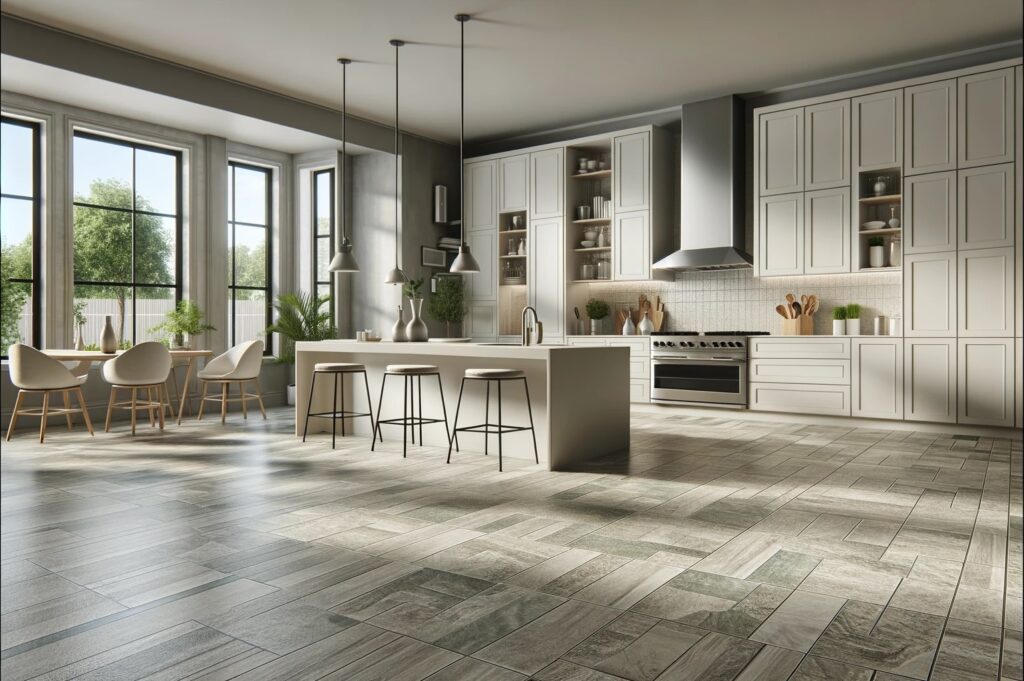Today, we’re looking into an often overlooked but incredibly charming flooring option – Linoleum! Yes, that’s right, the material that probably lines the floors of your grandma’s kitchen. It has a lot more going for it than you might think. So, let’s explore how this old-school material is making a trendy comeback in the eco-friendly era!
How Is Linoleum Made? A Recipe for Sustainability
First off, let’s cook up the basics. Linoleum is like the sourdough bread of the flooring world. It is made from a mixture of natural ingredients, including linseed oil (which comes from flax plants), pine rosin, wood flour, cork dust, and limestone. These ingredients are mixed, rolled out, and then left to cure. The result? A durable, natural flooring option that Mother Earth gives two green thumbs up.
The Benefits: Why Linoleum Is Laying Down the Green Carpet
- Eco-Friendly: Linoleum is compostable and biodegradable. At the end of its life, it returns to the earth, not leaving any nasty surprises for future generations.
- Durable: It’s tough as nails! With a lifespan of 20-40 years, linoleum floors can withstand high-traffic areas. For example, your kitchen or the hallway where your kids race their toy cars.
- Easy to Clean: A simple sweep and a mop with gentle cleaner will keep linoleum looking spiffy, making it a low-maintenance dream.
- Antibacterial: Linoleum is naturally resistant to bacteria and dust mites, making it a great choice for allergy sufferers.

Green Impact: Linoleum and the Environment
In the eco-conscious corner, linoleum is a heavyweight champion. Its production is relatively energy-efficient, especially compared to synthetic flooring options. Plus, since it’s made from renewable resources, it doesn’t deplete precious fossil fuels. By choosing linoleum, you’re not just selecting a floor; you’re casting a vote for a healthier planet.
Wallet-Friendly? The Cost of Going Green
When it comes to cost, linoleum offers a compelling story. Initially, it might be pricier than some synthetic options, but its durability means you won’t be redoing your floors anytime soon. Over time, it offers great value for money, proving that going green doesn’t have to mean spending all your green.
A Healthy Choice for Your Home
Are you breathing easy with linoleum? Absolutely. Since it’s made from natural materials, it doesn’t off-gas volatile organic compounds (VOCs) like some synthetic floors do. This makes your home’s air quality as fresh as a daisy.
A Recipe for the Brave
Curious about making your own? While it’s a bit of a challenge, the basic “recipe” involves mixing linseed oil with pine rosin and cork dust, spreading it onto a jute backing, and then letting it cure. However, perfecting this mixture might be a bit tricky without a factory setup. So, unless you’re a DIY wizard with a penchant for industrial experiments, sticking to pre-made linoleum might be your best bet.
Wrapping It Up
Linoleum, with its blend of durability, eco-friendliness, and charm, offers a flooring option that’s hard to beat. So next time you’re considering flooring options, remember: it isn’t just for your grandma’s kitchen anymore; it’s a stylish, smart choice for the environmentally conscious homeowner.
There you have it! A journey through the world of linoleum that proves this old-timer is still full of surprises. Whether you’re a green warrior or just looking to update your space, it offers a path that’s both earth-friendly and pleasing to the eye. Now, who’s ready to roll out the green carpet?
